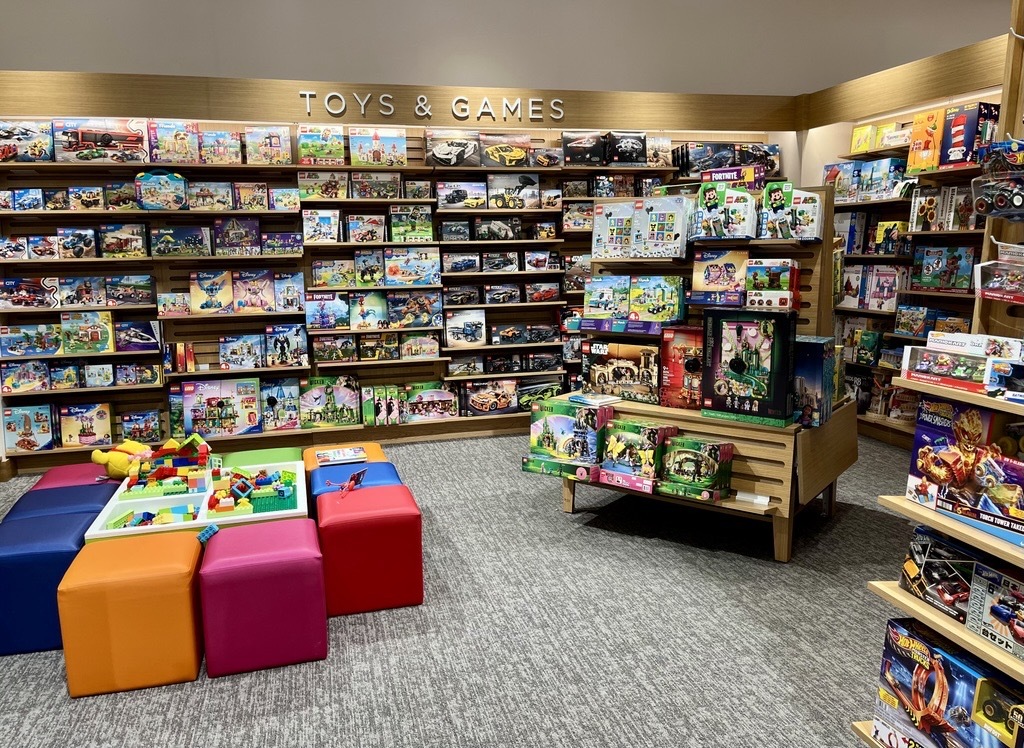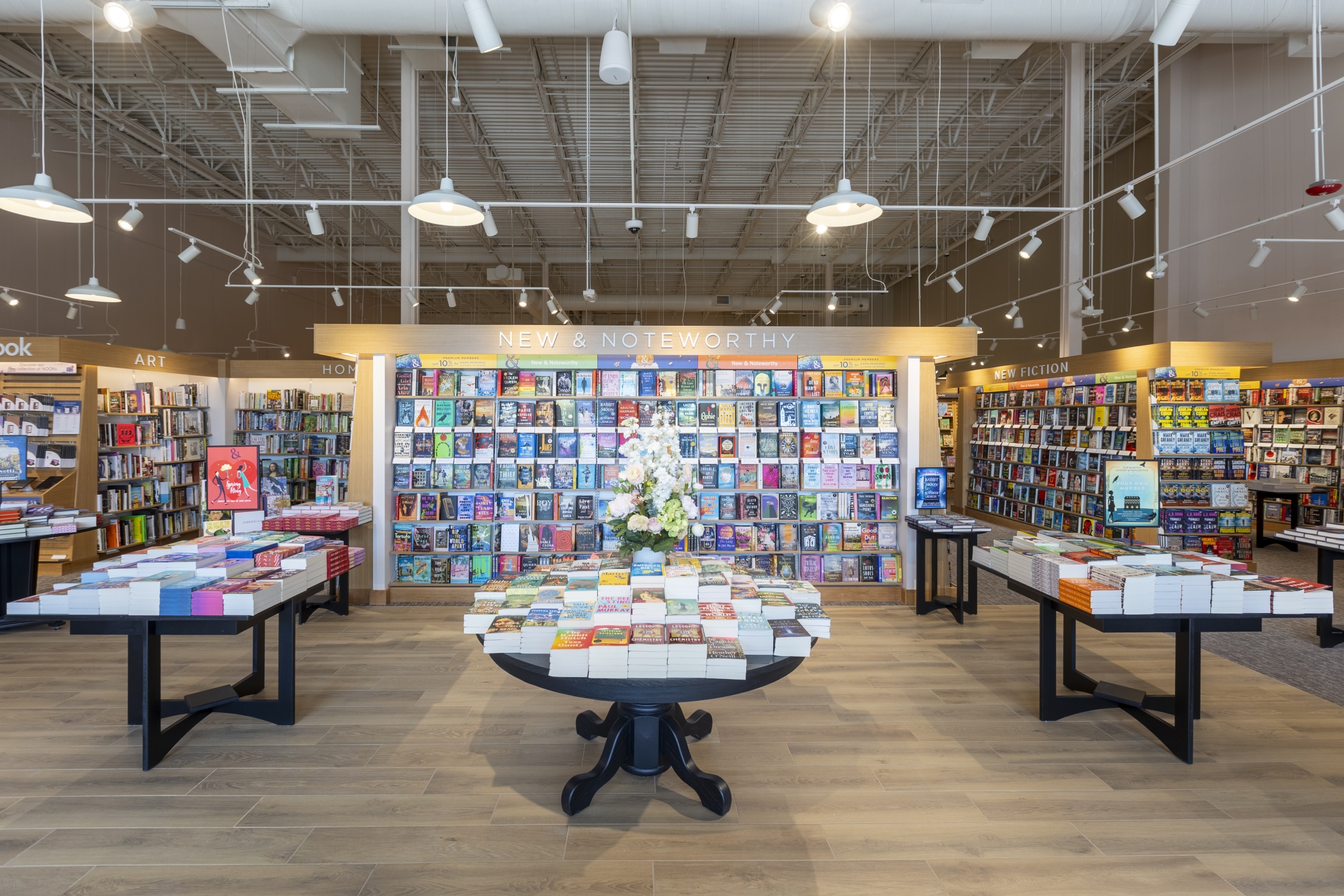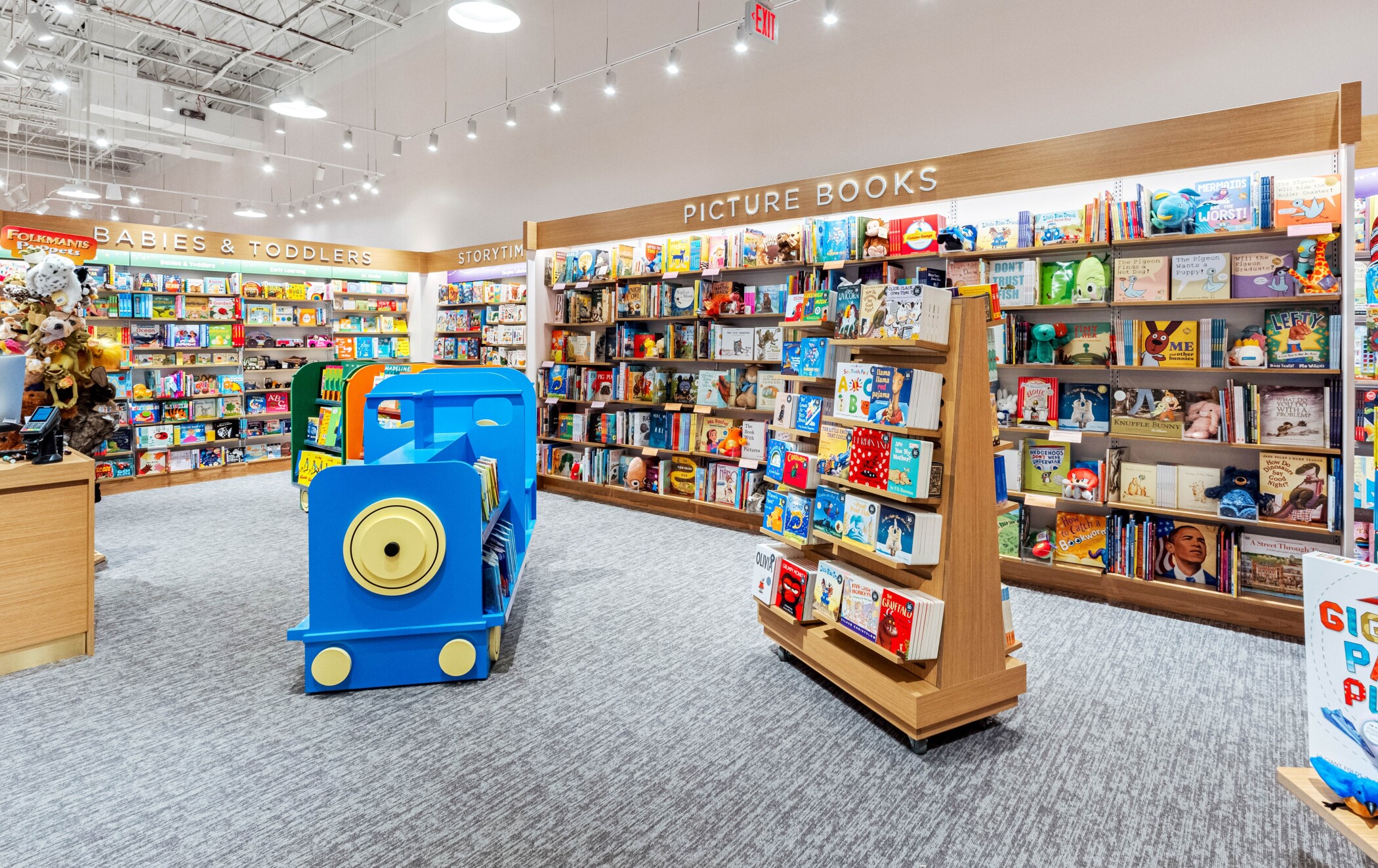When a Barnes & Noble opened to a long line of customers in August in a former Staples office supply store in Texas, it didn't have its traditional dark wood and green aesthetic. Instead, the feel was airier: soft Victorian pink walls, light-wood displays and genre-themed rooms with reading nooks as well as play areas catering to local customer preferences.
The new store, spanning roughly 20,000 square feet in the Dallas suburb of Rockwall, reflects the real estate-focused strategy behind Barnes & Noble's comeback. The chain is opening in smaller cities and has become more flexible in the type of real estate it leases. It's also selling more than the books and calendars it used to concentrate on, with in-demand merchandise including vinyl records, Lego sets and Minecraft games.
The retailer opened more stores last year than it did in the past 10 years combined. That marks a turning point for the New York City-based bookseller since Amazon and e-commerce nearly took Barnes & Noble out of business after the chain peaked at more than 700 stores in 2008.
"We are looking at all kinds of markets, and anyplace we have opened so far has been really successful," Janine Flanigan, vice president of store plan and design for the chain, told CoStar News.
Barnes & Noble has had "steadily elevated foot traffic" throughout 2025, with both total visits and average visits per location up year over year through August, according to a Placer.ai report. That shows its new stores designed for browsing and lingering could be resonating with customers.
Before its recent expansion, Flanigan said, Barnes & Noble had a strict playbook of leasing 25,000 square feet of space for each store that limited where it could rent. But, she said, "we have stores of all different shapes and sizes now, with stores as small as 4,000 square feet to stores as large as 30,000 square feet."
As a result, Barnes & Noble is on track to add 65 stores this year to its portfolio of more than 650 U.S. locations, through both ground-up construction and taking over spaces vacated by struggling retailers including Staples, Party City, Bed Bath & Beyond and Forever 21.
"It's great to have the opportunity to go into a new community where we haven't been previously," Brianna Jenkins, the store manager of the new Rockwall store, told CoStar News. "Rockwall never had a Barnes & Noble and ... a lot of customers I've spoken with used to drive to stores in Dallas, and now we get to be that home store in the community."
Taking on challenges
The jury is still out on whether the strategy will keep working. Challenges to the approach include an uncertain economy, the availability of books ordered online and competition from public libraries that are getting more aggressive about offering programming to stay relevant. There's also a cultural shift: the number of total books sold during the first half of 2025 was down 1.7% from the same time last year, according to Publisher's Weekly.
Even so, Barnes & Noble's strategy of opening stores that cater to specific neighborhoods and offer an experience is allowing the company to have some success in expanding into smaller markets, said Neil Saunders, a retail analyst and managing director at analytics firm GlobalData. This kind of customer-centric approach is one other retailers need to explore as consumers pull back on their spending habits amid inflation and concern about shifting tariff policies, Saunders said.

Barnes & Noble's reinvention came about under CEO James Daunt. He was brought in when hedge fund Elliott Advisors, also the owner of largest U.K. bookstore chain Waterstones, bought Barnes & Noble for $683 million at the end of 2019. Months after the purchase, the global pandemic upended the retail industry, and Daunt decided it was a good time to transform the real estate within Barnes & Noble stores while keeping its core team in place during the transition.
"We were fortunate to have an owner that was prepared to back the business" and that "is not always a given," Daunt said of Elliott Advisors on a podcast in April. The financial backing from the hedge fund during an uncertain period allowed Daunt to keep his longtime team of booksellers employed — and gave them time to reimagine the business.
"I figured there's a little bit more money lost, but if the world opened up again, we'd use this moment to improve our stores," Daunt added. "Then, once we do open, we'll have something much better."
For Barnes & Noble, switching up its merchandise and adding a compelling store experience is a strategy other retailers could use in their businesses, said Saunders.
"Too many stores suffer from not getting the fundamentals right in terms of things like merchandising," Saunders told CoStar News. "One of the things Daunt has done well is to listen to and empower local store teams. They know their customers best, so it is great that they are given more say over things."
More customer focus
By also listening to customers and leaning into what is important to them, Saunders said, Barnes & Noble was able to expand the number of stores in its chain. Once a retailer is "on a downward slide," it takes a lot to "regain relevance," he said, adding he's not sure many other struggling retailers could see this kind of success.
"Also, Barnes & Noble changed its store model — focusing more on smaller stores," Saunders said, a move that can include spaces with lower rent. "That change of format is important, too, as it's an adaptation to a shift in demand."
Executives say the chain is more assured in expanding locations.

"We made significant changes to the business in the way we laid out our legacy stores and really opened our stores up in a bigger capacity. Prior to our [current] CEO, leadership was not opening stores because of declining sales and aged stores," said Flanigan, who has been with Barnes & Noble for nearly 40 years.
But Daunt "changed the business and created a different buying structure that led us to double-digit increases in sales and has us opening up new stores. As leases come due, we are looking at different and better spaces," Flanigan said.
In Phoenix, Barnes & Noble opened its first new store in two decades in the city over the summer. The space was about 18,500 square feet, formerly home to a Forever 21, a retailer that was once a fast-fashion leader but closed all its stores after filing for bankruptcy protection earlier this year.
New layout
Barnes & Noble's new strategy has the retailer that traces its roots to 1873 considering its real estate options in a different way, Flanigan said.

Barnes & Noble reorganized its layout into different rooms that lead customers on a "journey of discovery throughout the building," Flanigan said. The bookseller's local staff tailor displays and store formats to their neighborhoods, she added.
Jennifer Frank, a partner at Dallas-based real estate services firm Segovia Partners, is helping Barnes & Noble on its expansion efforts in Texas and Oklahoma as well as surrounding states. The bookseller has gone from "tightening the ship," removing less-profitable stores from its fleet and restructuring its leases after it was acquired in 2019, to being "very flexible," Frank said.

Frank was the real estate broker who represented Barnes & Noble in its lease of the former Staples in Rockwall. The lease shows how Texas is "one of the most dynamic markets," she said, with a lot of population growth that is driving Barnes & Noble to look at locations beyond just the state's major cities.
"Barnes & Noble is looking at adding more middle markets" in Texas, Frank said.
In that state, the strategy has brought Barnes & Noble to Abilene, a city west of Fort Worth, for the first time in the company's history. The new store opened this year at the Shops at Abilene in a space formerly occupied by Bed Bath & Beyond. A new Barnes & Noble store is also coming to Sunrise Mall in Brownsville, Texas, near South Padre Island, replacing a former women's apparel retailer.
Barnes & Noble has the "ability to coexist with so many different restaurants and entertainment retailers, where you can stop before a movie or after dinner to read a book, have some quiet time or work or meet someone," Frank said.
